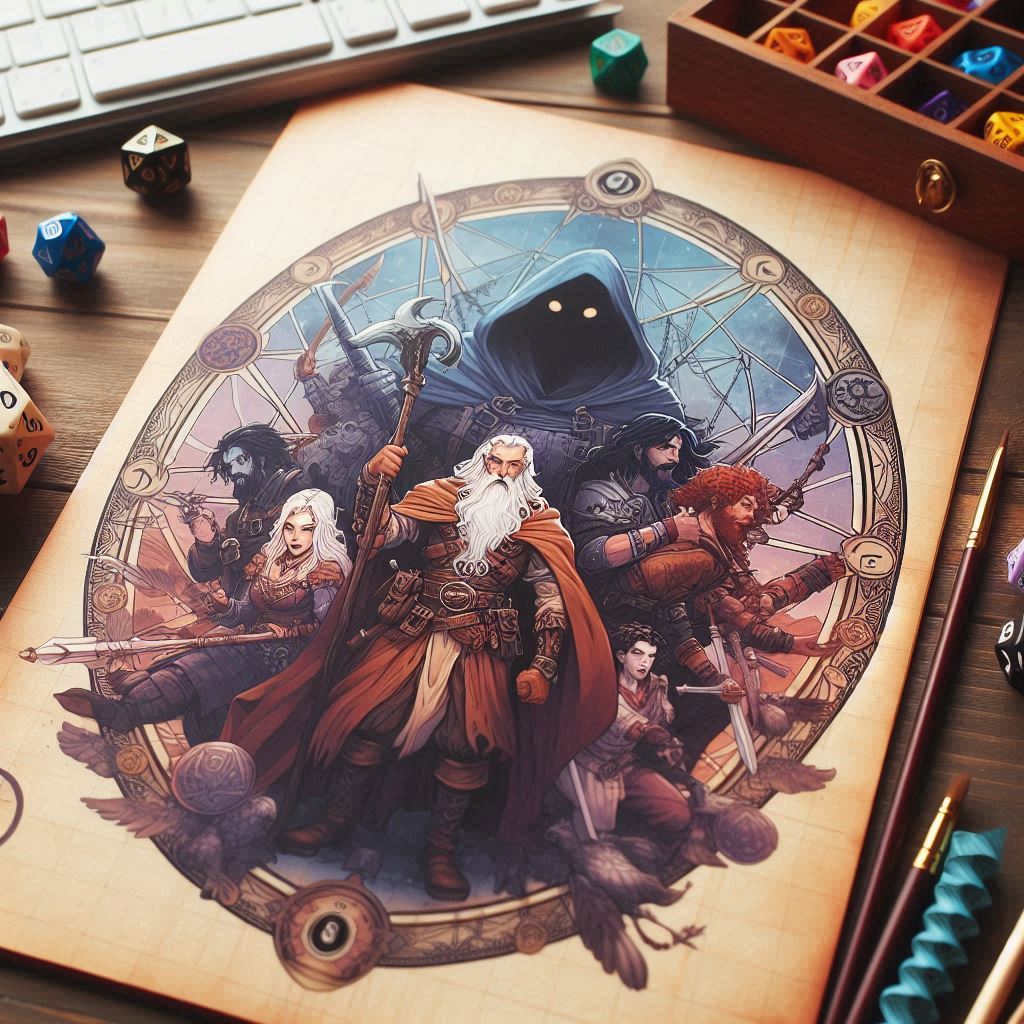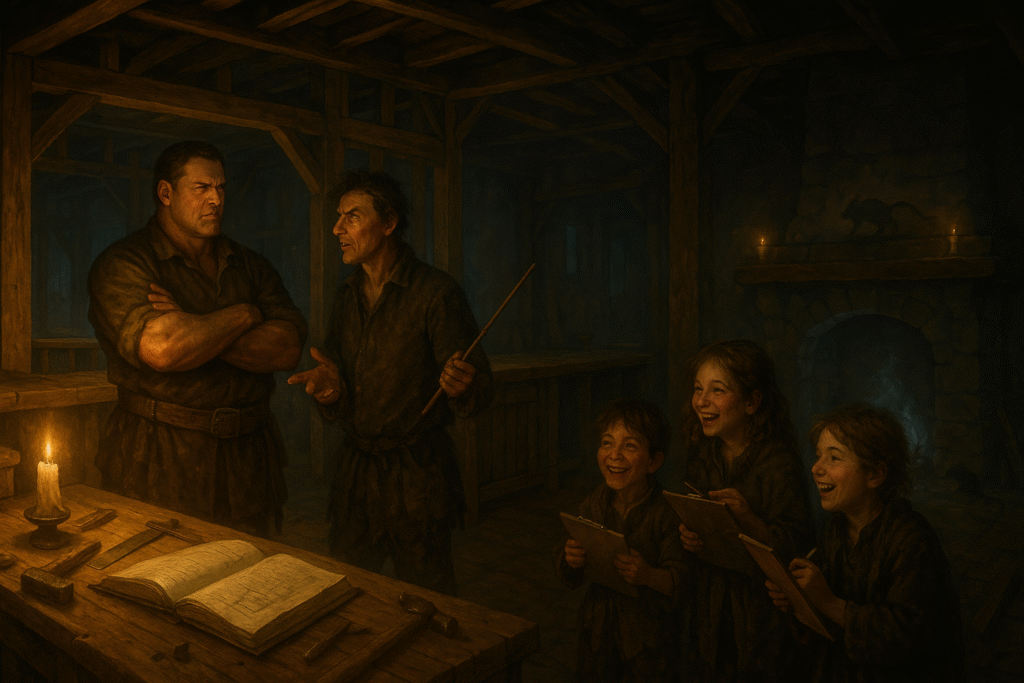How to Create a Character Using the 2024 Ruleset

# Ultimate Guide to Creating a Dungeons & Dragons Character Using the 2024 Ruleset
Creating a new character in Dungeons & Dragons (D&D) is one of the most exciting aspects of the game. With the 2024 ruleset, character creation has become more streamlined and flexible, allowing players to explore new possibilities while staying true to the core of the game. This guide will walk you through each step of the character creation process, from choosing your species and class to fleshing out your backstory and personality. Whether you’re a new player or a seasoned veteran, this comprehensive guide will help you build a character you’ll love playing.
## Step 1: Conceptualize Your Character
Before diving into the mechanics, take some time to think about your character concept. What kind of hero (or anti-hero) do you want to play? Consider the following questions:
– **Background**: What is your character’s history? Where did they come from?
– **Motivation**: What drives your character? Are they seeking adventure, revenge, or redemption?
– **Personality**: How does your character view the world? Are they optimistic, cynical, or somewhere in between?
Creating a character concept gives you a foundation to build upon and can help guide your choices in later steps.
## Step 2: Choose a Species
The 2024 ruleset includes a variety of species, each offering unique traits, abilities, and backgrounds. Here’s how to choose:
### Species Traits
1. **Review Available Species**: Consult the Player’s Handbook for the list of speciess available in the 2024 edition. Species may include traditional options like Humans, Elves, and Dwarves, as well as new and updated choices.
2. **Consider Species Traits**: Each species has specific traits that can enhance your character’s abilities. For example, Elves may have bonuses to Dexterity and access to magical abilities, while Dwarves might have enhanced resilience and proficiency with certain weapons.
3. **Fluff vs. Mechanics**: Think about how the racial traits align with your character concept. If you’re envisioning a nimble rogue, an Elf or Halfling might be a natural fit, while a sturdy fighter could benefit from a Dwarf or Dragonborn.
### Example Species
– **Human**: Versatile, with bonuses to all ability scores.
– **Elf**: Agile and perceptive, with a knack for magic.
– **Dwarf**: Tough and resilient, with a focus on craftsmanship and combat.
– **Tiefling**: Mysterious, with infernal heritage and innate spellcasting abilities.
Once you’ve selected a species, record its features on your character sheet.
## Step 3: Select a Class
Classes define your character’s abilities, skills, and playstyle. The 2024 ruleset offers an array of classes to choose from, each with its unique features.
### Class Selection
1. **Explore Available Classes**: Check the Player’s Handbook for the list of classes, such as Fighter, Wizard, Rogue, Cleric, and newer options introduced in this edition.
2. **Class Features**: Review the class features, such as hit points, saving throws, and skills. Consider how these align with your character concept and desired playstyle.
3. **Role in the Party**: Think about what role you want to fulfill in your adventuring party. Do you want to be a frontline tank, a stealthy infiltrator, a versatile spellcaster, or a supportive healer?
### Example Classes
– **Fighter**: A versatile warrior skilled in various combat styles.
– **Rogue**: A cunning character who excels in stealth and trickery.
– **Wizard**: A powerful spellcaster with access to a wide range of spells.
– **Cleric**: A divine spellcaster who can heal and support allies.
After choosing a class, write down the relevant information on your character sheet.
## Step 4: Determine Ability Scores
Ability scores are critical in defining your character’s strengths and weaknesses. The 2024 ruleset allows players to generate ability scores using various methods, such as point buy or rolling dice.
### Ability Score Generation
1. **Choose a Method**: Decide whether you want to use the standard array, point buy system, or roll for your scores. The standard array provides balanced scores (15, 14, 13, 12, 10, 8), while point buy allows for customization.
2. **Allocate Scores**: Assign your ability scores based on your class and species. For example, if you’re playing a Fighter, you may want to prioritize Strength or Dexterity.
3. **Calculate Modifiers**: Each ability score has a corresponding modifier that affects your rolls. For example, a score of 15 gives a +2 modifier, while an 8 results in a -1 modifier. Record these on your character sheet.
### Ability Scores Overview
– **Strength (STR)**: Physical power and melee attack rolls.
– **Dexterity (DEX)**: Agility, ranged attack rolls, and Armor Class (AC).
– **Constitution (CON)**: Health and stamina; affects hit points.
– **Intelligence (INT)**: Knowledge, spellcasting for certain classes.
– **Wisdom (WIS)**: Perception and insight; affects spellcasting for some classes.
– **Charisma (CHA)**: Force of personality; affects social interactions and spellcasting for some classes.
## Step 5: Choose Skills and Proficiencies
Skills and proficiencies represent your character’s training and expertise in various areas.
### Skills Selection
1. **Class Skills**: Each class has a list of available skills. Choose a number of skills to be proficient in, typically equal to your class’s skill proficiency limit.
2. **Racial Skills**: Some species offer additional skills or proficiencies. Make sure to include these in your character’s skill set.
3. **Personality Alignment**: Choose skills that align with your character’s backstory and personality. If your character is a charismatic bard, for example, you might select Persuasion and Performance.
### Example Skills
– **Acrobatics**: Dexterity-based skill for balance and agility.
– **Stealth**: Dexterity-based skill for hiding and sneaking.
– **Insight**: Wisdom-based skill for understanding motives.
– **Arcana**: Intelligence-based skill for knowledge of magic.
Once you’ve selected your skills, note your proficiency bonuses and modifiers on your character sheet.
## Step 6: Select Equipment and Starting Gear
Every character begins their adventure with specific equipment that reflects their class and background.
### Equipment Selection
1. **Starting Gear**: Refer to your class’s starting equipment section to choose your gear. You can often choose between different weapons, armor, and tools.
2. **Background Equipment**: Each background provides additional equipment or items that can enhance your character’s story and abilities. Select items that resonate with your character’s history.
3. **Currency**: Record any starting gold or currency you receive, which can be used to purchase additional items.
### Example Equipment Choices
– **Fighter**: Chain mail armor, a longsword, and a shield.
– **Rogue**: Leather armor, daggers, and thieves’ tools.
– **Wizard**: A spellbook, a quarterstaff, and basic spell components.
## Step 7: Define Your Background
Your character’s background adds depth and flavor, providing context for their skills and motivations.
### Choosing a Background
1. **Select a Background**: Review the available backgrounds in the Player’s Handbook. Common backgrounds include Soldier, Scholar, Artisan, and Outlander.
2. **Background Features**: Each background grants unique features and skill proficiencies. Consider how these elements tie into your character’s story.
3. **Backstory Development**: Flesh out your character’s history, including significant life events and relationships. This will help inform your character’s motivations and personality traits.
### Example Backgrounds
– **Noble**: Background in aristocracy; skills in Persuasion and History.
– **Urchin**: Grew up on the streets; skills in Stealth and Sleight of Hand.
– **Sailor**: Experienced in maritime life; skills in Athletics and Navigation.
## Step 8: Flesh Out Personality Traits, Ideals, Bonds, and Flaws
The final step in character creation involves defining your character’s personality. This aspect adds richness to your gameplay and helps you role-play effectively.
### Personality Components
1. **Personality Traits**: Choose a couple of traits that define your character’s behavior. Are they brave, curious, or overly cautious?
2. **Ideals**: Identify what principles guide your character’s actions. Is it honor, freedom, knowledge, or something else?
3. **Bonds**: Think about connections that are important to your character. This could be a family member, a mentor, or a sacred duty.
4. **Flaws**: Every character has weaknesses. Consider what flaws might complicate your character’s journey—perhaps they’re overly trusting or have a fear of the dark.
### Example Personality Traits
– **Personality Trait**: “I’m always polite and respectful.”
– **Ideal**: “Freedom: Everyone should be free to pursue their own happiness.”
– **Bond**: “I will protect my family at all costs.”
– **Flaw**: “I have a weakness for drink.”
## Step 9: Finalize Your Character Sheet
Once you’ve completed all the steps, it’s time to finalize your character sheet. Ensure all details are accurately recorded, including:
– **Ability scores and modifiers**
– **Skills and proficiencies**
– **Equipment and starting gear**
– **Background and personality traits**
### Review and Reflect
Take a moment to reflect on your character. Does everything align with your original concept? Feel free to make adjustments if necessary. Your character should be someone you’re excited to play and explore.
## Step 10: Integrate with the Party
If you’re playing in a group, consider how your character fits into the party dynamic. Communicate with your fellow players and the DM to ensure that your character complements others, enhancing group synergy and storytelling potential.
### Party Roles
Think about your character’s role in the group:
– **Tank**: Frontline fighter absorbing damage.
– **Damage Dealer**: High damage output, either in melee or ranged combat.
– **Support**: Healing and buffing allies, managing resources.
– **Control**: Manipulating the battlefield with spells or abilities.
## Conclusion
Creating a character in Dungeons & Dragons using the 2024 ruleset is a rewarding and enjoyable process. By following this guide, you’ll be equipped to build a character that not only fits mechanically within the game but also resonates with you on a personal level. Embrace the collaborative storytelling aspect of D&D and enjoy the journey ahead with your new character!
Happy adventuring!


